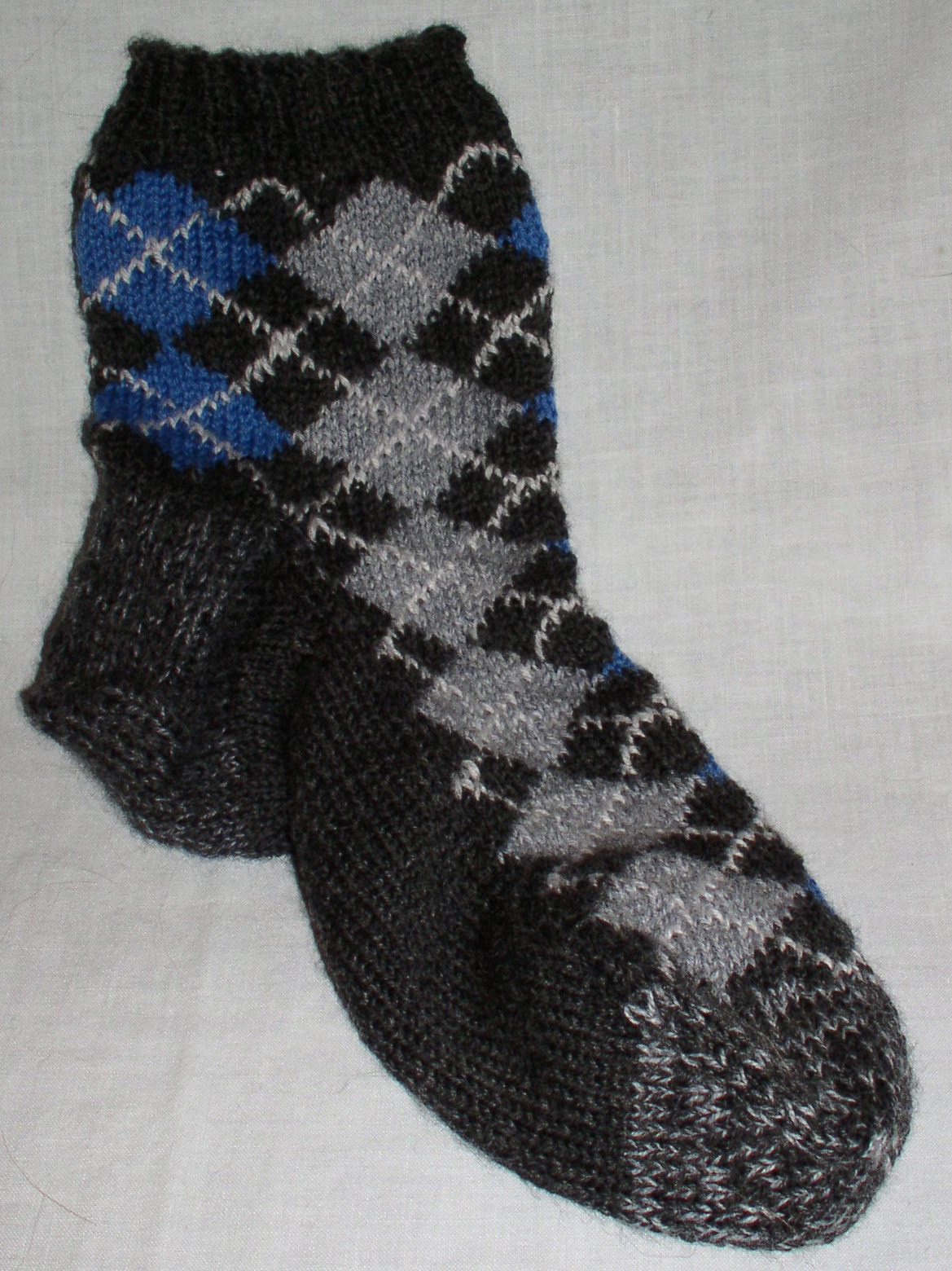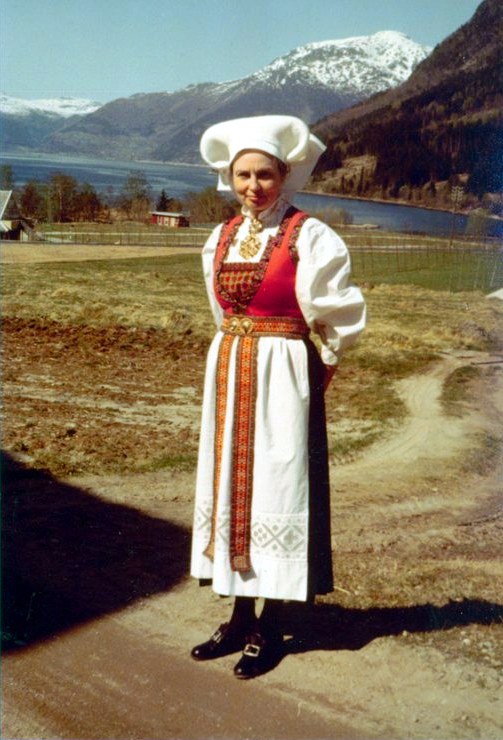|
Lusekofte
The lusekofte (, '' lice jacket''), also called the Setesdalsgenser (''Setesdal sweater'') is a traditional Norwegian sweater, dating from the 19th century. The original sweater features a black and white design, the name referring to the isolated black stitches.Anne KjellberglusekofteStore Norske Leksikon, retrieved 30 March, 2013 They may also feature selburose designs. In recent times additional color is sometimes given to this black and white sweater by woven ribbons or bands of black woolen fabric embroidered in the type of colorful designs also found in the bunads and in rosemaling around the neck and along the front opening. These front opening are usually closed by a row of pewter or silver clasps. After the lusekofte was discovered by tourists in the 1920s, it became very popular and today they are made in many different patterns and colours in addition to the traditional Setesdal sweater. The lusekofte is casual attire, traditionally mostly worn by men. See also ... [...More Info...] [...Related Items...] OR: [Wikipedia] [Google] [Baidu] |
Lusekofte
The lusekofte (, '' lice jacket''), also called the Setesdalsgenser (''Setesdal sweater'') is a traditional Norwegian sweater, dating from the 19th century. The original sweater features a black and white design, the name referring to the isolated black stitches.Anne KjellberglusekofteStore Norske Leksikon, retrieved 30 March, 2013 They may also feature selburose designs. In recent times additional color is sometimes given to this black and white sweater by woven ribbons or bands of black woolen fabric embroidered in the type of colorful designs also found in the bunads and in rosemaling around the neck and along the front opening. These front opening are usually closed by a row of pewter or silver clasps. After the lusekofte was discovered by tourists in the 1920s, it became very popular and today they are made in many different patterns and colours in addition to the traditional Setesdal sweater. The lusekofte is casual attire, traditionally mostly worn by men. See also ... [...More Info...] [...Related Items...] OR: [Wikipedia] [Google] [Baidu] |
Selburose
In Norwegian knitting, a ''selburose'' () is a knitted rose pattern in the shape of a regular octagram. It is traditionally used for winter clothing such as the Selbu mitten (''selbuvott'') and sweaters (''lusekofte, lopapeysa'' and ''mariusgenser''). Of ancient origin, the pattern is associated with the town of Selbu in Norway, and has become an international symbol of Norway (or Scandinavia generally), Christmas and winter. History The design now known as the ''selburose'' has a long history. It appears in textiles across European history, and in knitting pattern books from Italy, France, Switzerland and Germany in the 16th to 18th century. It appears to combine designs of Islamic and Christian tradition based on Coptic and Byzantine art, or even the Sumerian Star of Ishtar. In Norway, the pattern was already in use prior to 1857 on sweaters from Western Norway based on Danish designs. Marit Guldsetbrua Emstad (born 1841), a girl from Selbu, popularized the design in 1857 w ... [...More Info...] [...Related Items...] OR: [Wikipedia] [Google] [Baidu] |
Pewter
Pewter () is a malleable metal alloy consisting of tin (85–99%), antimony (approximately 5–10%), copper (2%), bismuth, and sometimes silver. Copper and antimony (and in antiquity lead) act as hardeners, but lead may be used in lower grades of pewter, imparting a bluish tint. Pewter has a low melting point, around , depending on the exact mixture of metals. The word ''pewter'' is probably a variation of the word ''spelter'', a term for zinc alloys (originally a colloquial name for zinc). History Pewter was first used around the beginning of the Bronze Age in the Near East. The earliest known piece of pewter was found in an Egyptian tomb, c. 1450 BC, but it is unlikely that this was the first use of the material. Pewter was used for decorative metal items and tableware in ancient times by the Egyptians and later the Romans, and came into extensive use in Europe from the Middle Ages until the various developments in pottery and glass-making during the 18th and 19th centuries. ... [...More Info...] [...Related Items...] OR: [Wikipedia] [Google] [Baidu] |
Norwegian Clothing
Norwegian, Norwayan, or Norsk may refer to: *Something of, from, or related to Norway, a country in northwestern Europe *Norwegians, both a nation and an ethnic group native to Norway *Demographics of Norway *The Norwegian language, including the two official written forms: **Bokmål, literally "book language", used by 85–90% of the population of Norway **Nynorsk, literally "New Norwegian", used by 10–15% of the population of Norway *The Norwegian Sea Norwegian or may also refer to: Norwegian *Norwegian Air Shuttle, an airline, trading as Norwegian **Norwegian Long Haul, a defunct subsidiary of Norwegian Air Shuttle, flying long-haul flights *Norwegian Air Lines, a former airline, merged with Scandinavian Airlines in 1951 *Norwegian coupling, used for narrow-gauge railways *Norwegian Cruise Line, a cruise line *Norwegian Elkhound, a canine breed. *Norwegian Forest cat, a domestic feline breed *Norwegian Red, a breed of dairy cattle *Norwegian Township, Schuylkill County, ... [...More Info...] [...Related Items...] OR: [Wikipedia] [Google] [Baidu] |
Intarsia (knitting)
Intarsia is a knitting technique used to create patterns with multiple colours. As with the woodworking technique of the same name, fields of different colours and materials appear to be inlaid in one another, fit together like a jigsaw puzzle. Unlike other multicolour techniques (including Fair Isle, slip-stitch colour, and double knitting), there is only one "active" colour on any given stitch, and yarn is not carried across the back of the work; when a colour changes on a given row, the old yarn is left hanging. This means that any intarsia piece is topologically several disjoint columns of colour; a simple blue circle on a white background involves one column of blue and two of white—one for the left and one for the right. Intarsia is most often worked flat, rather than in the round. However, it is possible to knit intarsia in circular knitting using particular techniques. Common examples of intarsia include sweaters with large, solid-colour features like fruits, flower ... [...More Info...] [...Related Items...] OR: [Wikipedia] [Google] [Baidu] |
Lopapeysa
A lopapeysa () or Icelandic sweater is an Icelandic style of sweater originating in early or mid-20th century, at a time when imports had displaced older and more traditional Icelandic clothing and people began to search for new ways to utilize the plentiful native wool. The design has since become a national icon for Icelandic cultural identity. Terminology ''Lopapeysa'' (plural ''lopapeysur'') is a compound word, from ''lopi'', denoting the particular kind of unspun yarn traditionally used to make ''lopapeysur'', and ''peysa'' 'sweater, jumper, pullover'. Thus the word literally means 'sweater made of lopi'. Design of the sweater It is characterized by a yoke design – that is a wide decorative circle surrounding the neck opening. The sweater is knitted in a non-varying circle, meaning that there is no difference between the front and the back, unless a zipper is added. The body of the sweater is knitted using circular needles, while 'the sleeves are picked up onto the needle ... [...More Info...] [...Related Items...] OR: [Wikipedia] [Google] [Baidu] |
Mariusgenser
Marius sweaters ( no, Mariusgenser) are Norwegian-style knitted sweaters with patterns inspired by traditional Setesdal sweater ( no, Setesdalsgenser), but without lice, a type of pattern. While the traditional sweaters used the natural colors of sheep wool - black, gray, brown and white - Marius sweater designs incorporated colors, with the most common being red, white and blue, the colors of the Norwegian flag. Origin The origin of the sweater has been subject to dispute in media. Designer said she designed the pattern in 1953, influenced by traditional Norwegian knitting patterns found in the 1929 book ''Norske Strikkemønstre'' (Norwegian knitting patterns) by Annichen Sibbern. She sold the legal rights to distribute the hand-knit pattern the same year to for 100 Norwegian kroner. Designer said she designed the pattern in the later 1920s, also inspired by the book by Sibbern, and that she in the beginning of 1950s had hired women who hand-knitted the sweater for sale in ... [...More Info...] [...Related Items...] OR: [Wikipedia] [Google] [Baidu] |
Wrist Clasp
A wrist clasp is a mechanism made of a metal hook and an eye closure, used for closing the wrist opening on a tunic. Wrist clasps are considered to be an important piece of dress accessories for both Vikings and Anglo Saxons. May 6, 2013, eirny.com See also *Watch strap
A watch strap, watch band, watch bracelet or watch belt is a bracelet that straps a wrist watch onto the wrist. Watch straps may be made of leather, plastic, rubber, cloth, or metal, sometimes in combination. It can be regarded as a fashion item, ...
Notes {{clot ...[...More Info...] [...Related Items...] OR: [Wikipedia] [Google] [Baidu] |
Silver
Silver is a chemical element with the Symbol (chemistry), symbol Ag (from the Latin ', derived from the Proto-Indo-European wikt:Reconstruction:Proto-Indo-European/h₂erǵ-, ''h₂erǵ'': "shiny" or "white") and atomic number 47. A soft, white, lustrous transition metal, it exhibits the highest electrical conductivity, thermal conductivity, and reflectivity of any metal. The metal is found in the Earth's crust in the pure, free elemental form ("native silver"), as an alloy with gold and other metals, and in minerals such as argentite and chlorargyrite. Most silver is produced as a byproduct of copper, gold, lead, and zinc Refining (metallurgy), refining. Silver has long been valued as a precious metal. Silver metal is used in many bullion coins, sometimes bimetallism, alongside gold: while it is more abundant than gold, it is much less abundant as a native metal. Its purity is typically measured on a per-mille basis; a 94%-pure alloy is described as "0.940 fine". As one of th ... [...More Info...] [...Related Items...] OR: [Wikipedia] [Google] [Baidu] |
Bunad
''Bunad'' (, plural: ''bunader''/''bunadar'') is a Norwegian umbrella term encompassing, in its broadest sense, a range of both traditional rural clothes (mostly dating to the 18th and 19th centuries) as well as modern 20th-century folk costumes. In its narrow sense the word ''bunad'' refers only to clothes designed in the early 20th century that are loosely based on traditional costumes. The word ''bunad'' in itself is a 20th-century invention. The bunad movement has its root in 19th-century national romanticism, which included an interest for traditional folk costumes not only in Norway, but also in neighbouring countries such as Denmark and notably Germany. However, in Norway, national romanticist ideas had a more lasting impact, as seen in the use of folk-inspired costumes. History The bunad movement has been carried forward by enthusiasts all over the country and new bunad variations are frequently created and proposed for approval. Designers such as Lise Skjåk Bræk h ... [...More Info...] [...Related Items...] OR: [Wikipedia] [Google] [Baidu] |
Rosemaling
Rose-painting, , or is a Scandinavian decorative folk painting that flourished from the 1700s to the mid-19th century, particularly in Norway. In Sweden, rose-painting began to be called , c. 1901, for the region where it had been most popular and (''kurbits''), in the 1920s, for a characteristic trait, but in Norway the old name still predominates beside terms for local variants. Rose-painting was used to decorate church walls and ceilings. It then spread to wooden items commonly used in daily life, such as ale bowls, stools, chairs, cupboards, boxes, and trunks. Using stylized ornamentation made up of fantasy flowers, scrollwork, fine line work, flowing patterns and sometimes geometric elements give rose-painting its unique feel. Some paintings may include landscapes and architectural elements. Rose-painting also utilizes other decorative painting techniques such as glazing, spattering, marbleizing, manipulating the paint with the fingers or other objects. Regional styles of r ... [...More Info...] [...Related Items...] OR: [Wikipedia] [Google] [Baidu] |






